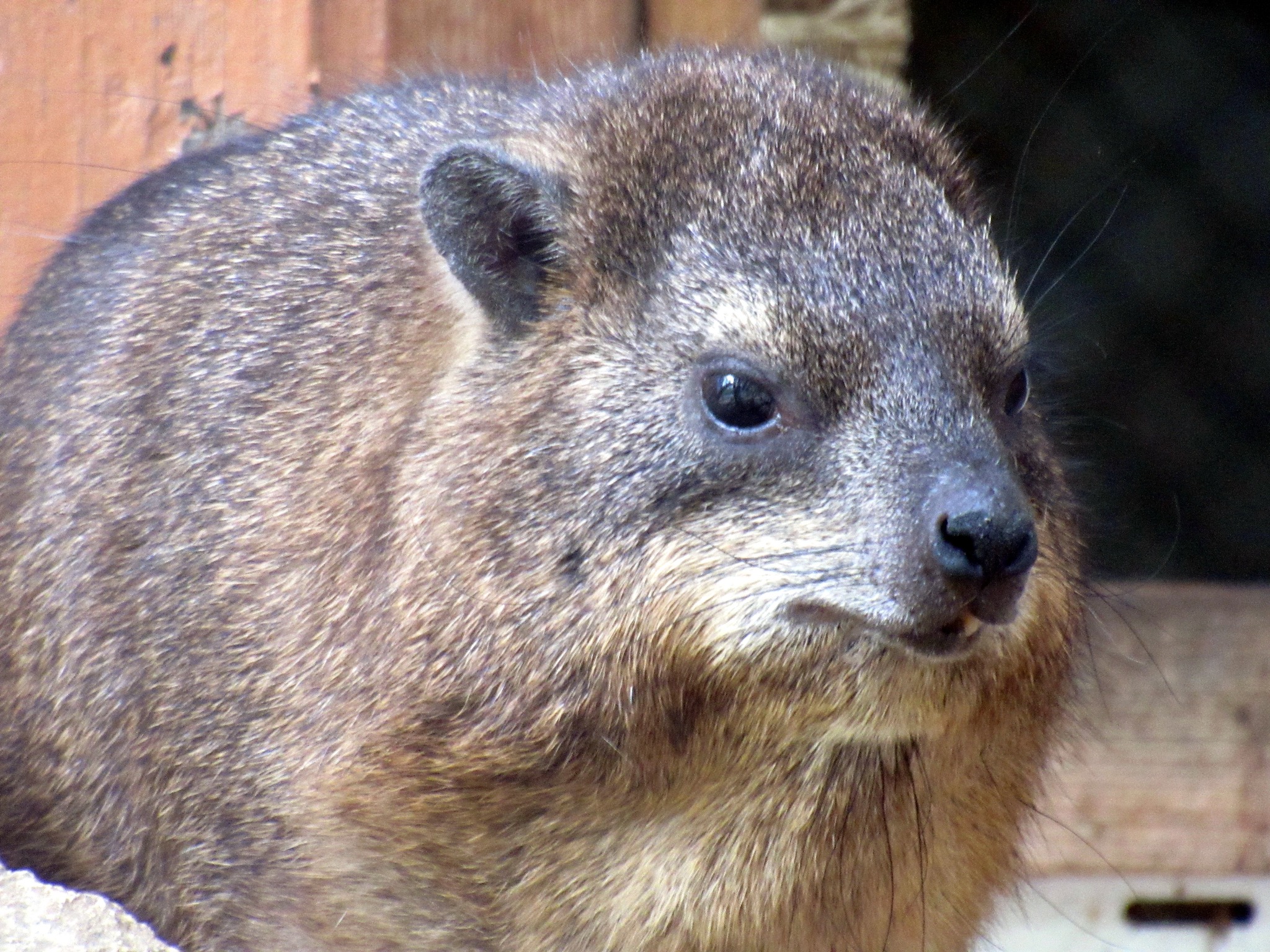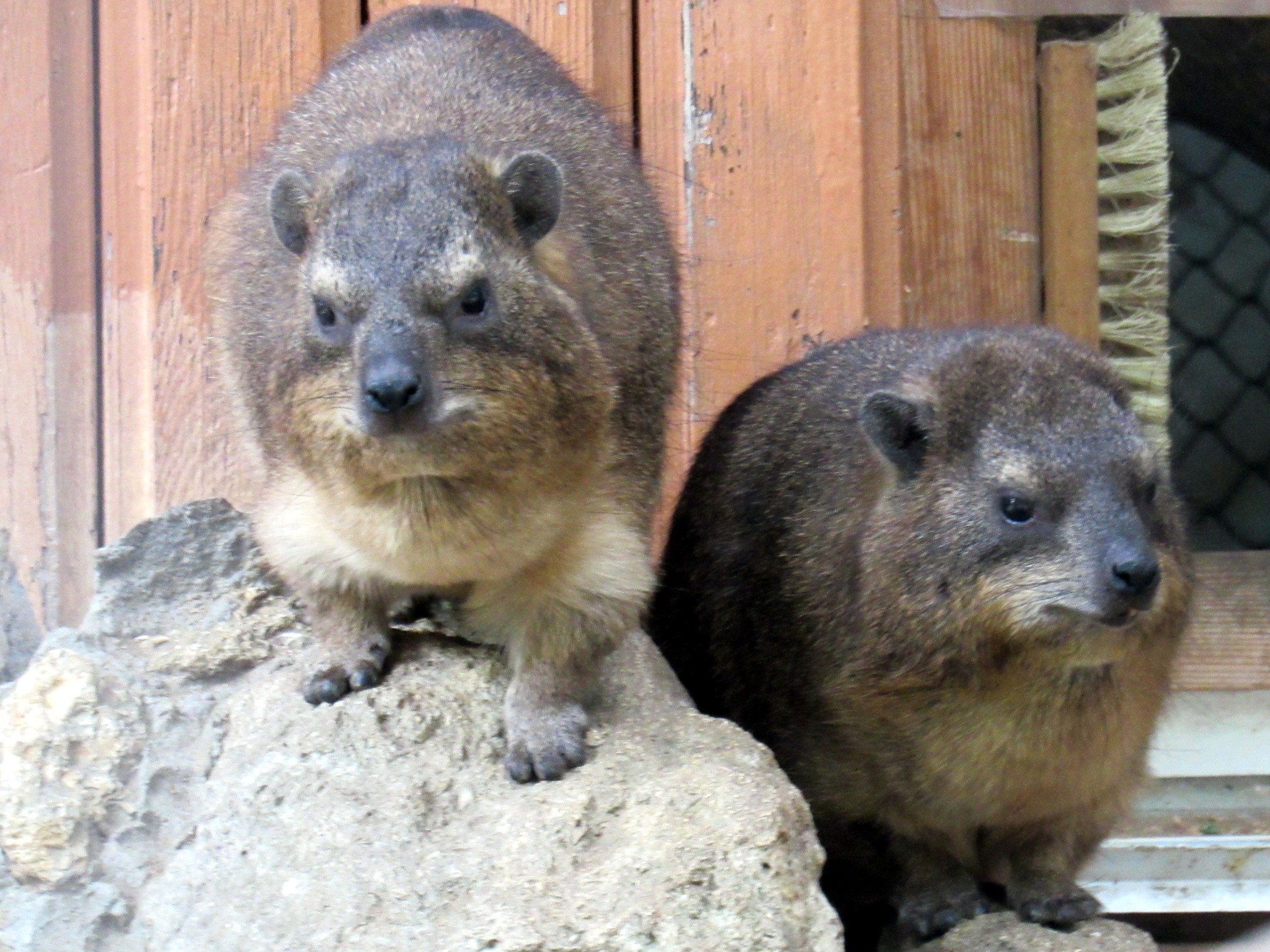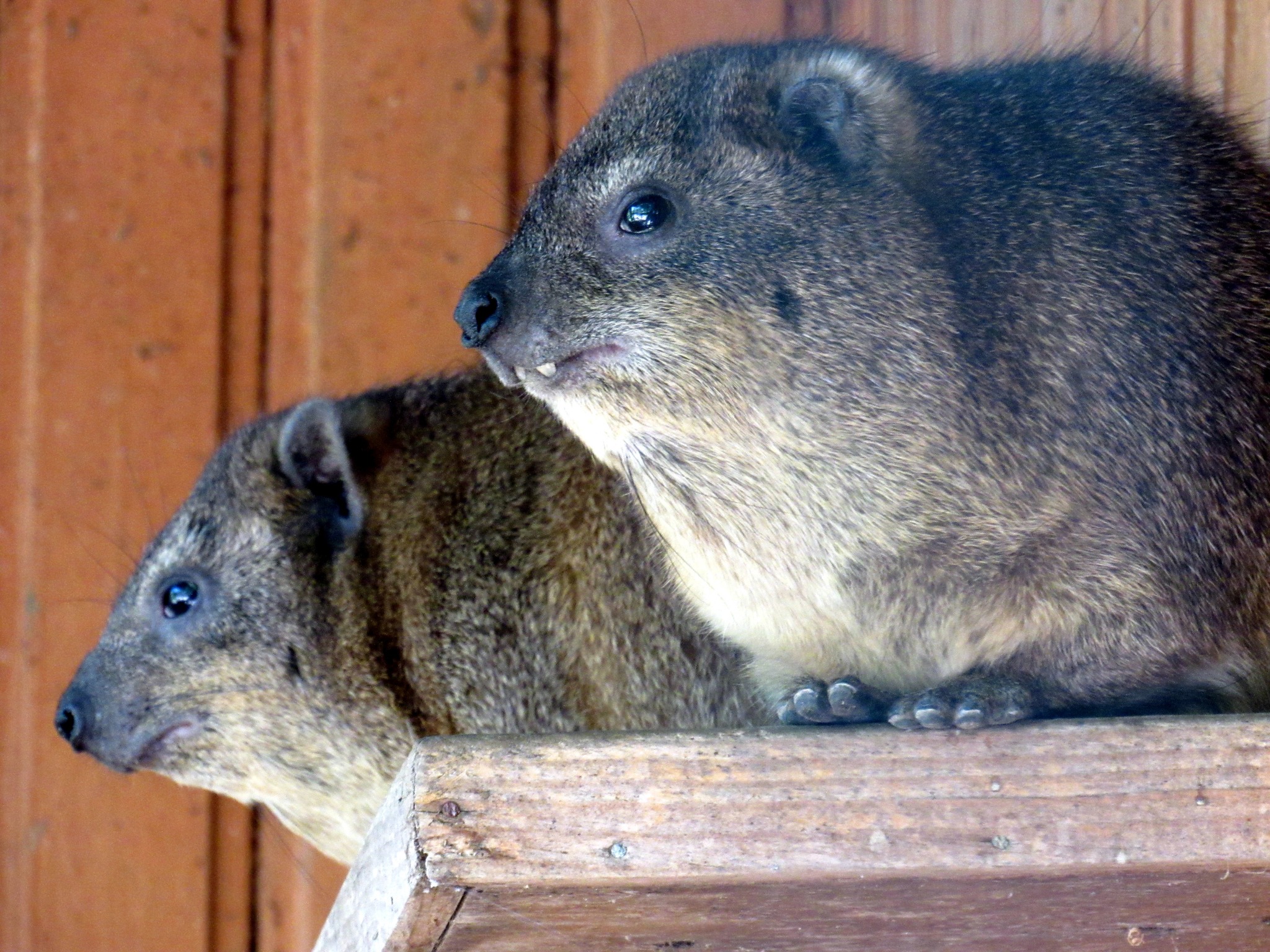Animals of the zoo
Today we want to tell you about the inhabitants of the zoo, which many of our visitors do not even notice. These animals are very interesting and deserve your attention! Animals with large incisors are similar to rodents, especially they resemble guinea pigs, but scientists claim that their closest relatives are ... elephants!
Rock hyraxes (Procavia capensis) are small mammals living in Africa. Rock hyraxes inhabit rocks, rocky outcrops, remnants or stony scrub deserts. They find shelter among stones or in empty burrows of other animals.
Rock hyraxes are very ancient animals that are separated into a separate row. Phylogenetically, modern hyraxes are closest to proboscis, with which they have many similar features in the structure of the skeleton and teeth (hyraxes even have teeth of a special shape somewhat similar to elephants, a kind of "tusks", only very small). Also, pay attention to the toes on their paws – what a miniature elephant's feet!
Despite their clumsy appearance, these animals are very mobile, they easily climb vertical rocks. The soles are always wet due to heavy sweating, which helps damans to climb rocks – the peculiar structure of the feet helps them act as suction cups. These animals eat grass, leaves, berries, fruits, and insects. Hyraxes live in fairly large groups. Hyraxes have an extended distribution of vibrissae covering the entire body. These vibrissae probably help them to navigate in tight caves.
Hyraxes have poor thermoregulation, so they need to lie in the sun, huddle together and climb on top of each other to better maintain their temperature. It is precisely because of poorly developed thermoregulation that these animals can be seen in our zoo only in the summer – with the onset of the first cold, fragile residents are transferred to a warm room.
Now you can find these interesting animals in the enclosure, which is located not far from the summer enclosure for elephants, next to the meerkats.


